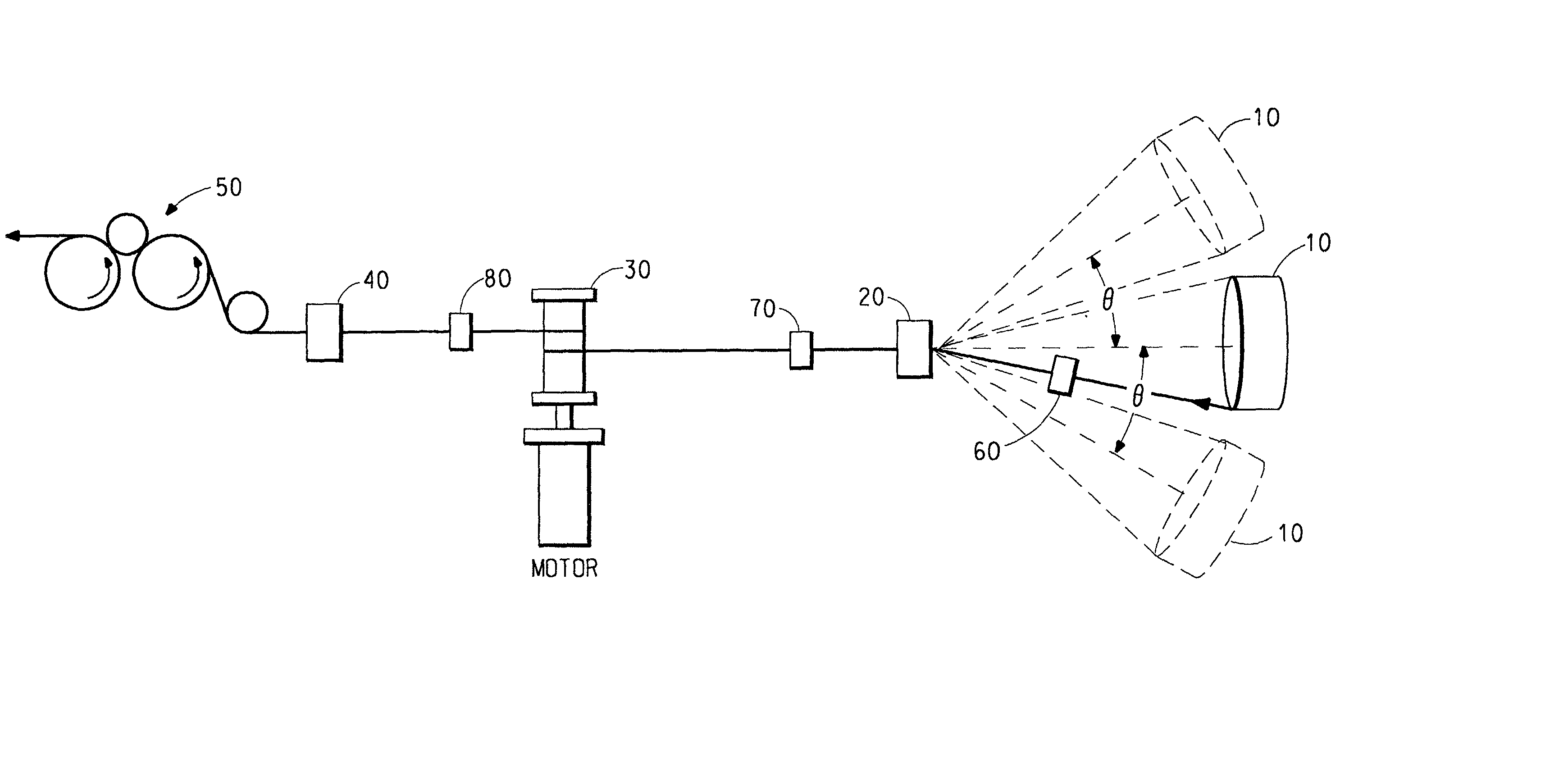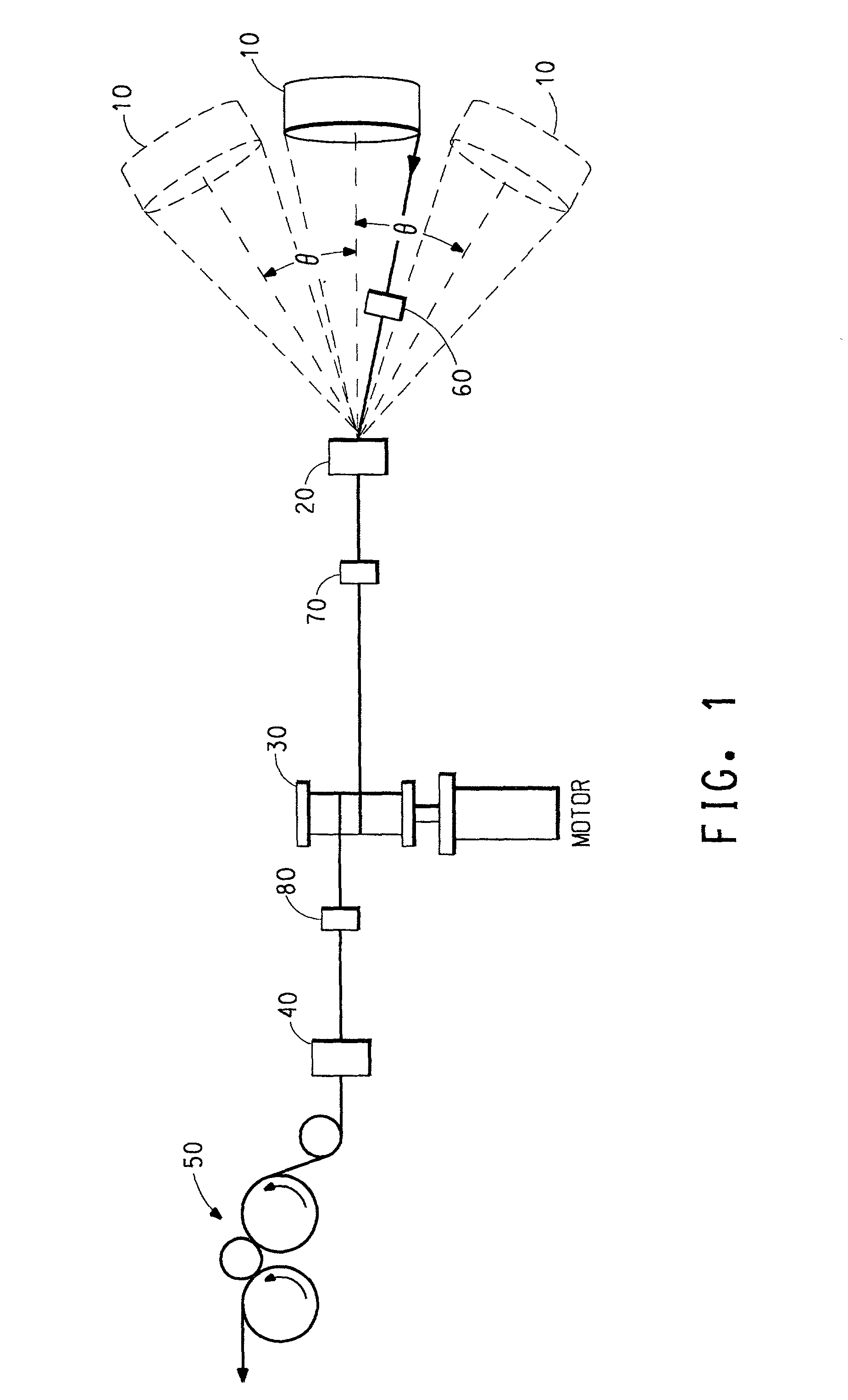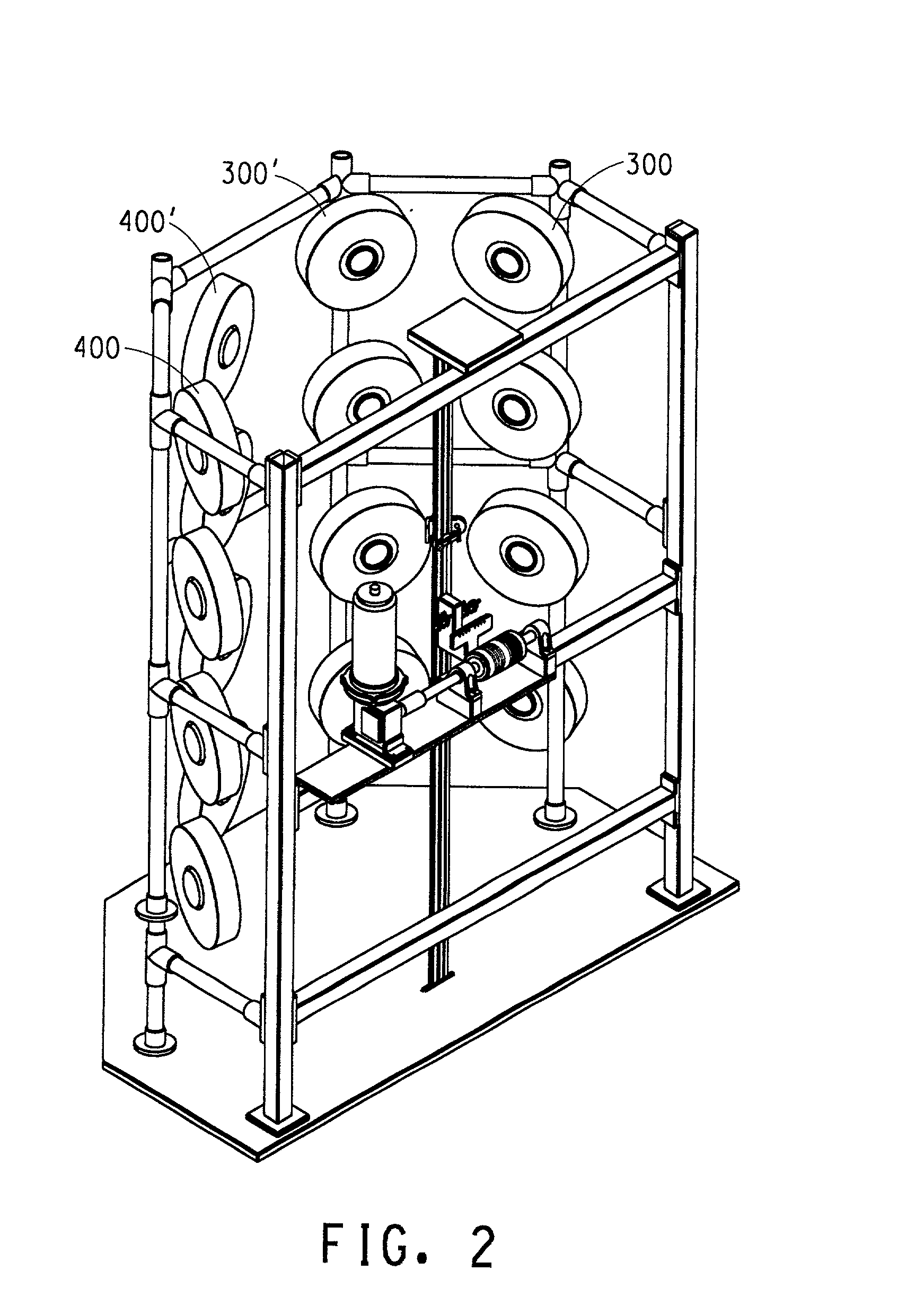Unwinder for as-spun elastomeric fiber
a technology of elastomeric fibers and unwinders, which is applied in the direction of manufacturing tools, knitting, shuttles, etc., can solve the problems of unproductive downtime, high frictional forces and tension levels of fibers that exhibit high cohesive forces (generally referred to as "tacks"), and unacceptable variations in threadline tension
- Summary
- Abstract
- Description
- Claims
- Application Information
AI Technical Summary
Problems solved by technology
Method used
Image
Examples
example 2
[0057] The same test equipment as described in Example 1, but configured to more closely correspond to the preferred embodiment of the OETO unwinder design was utilized. With reference to FIG. 1, the equipment had the following elements in the order in which they were encountered by the moving threadline: fiber package 10, captive rolling guide 60, static guide 20, captive rolling guide 70, first, driven roll 30, captive rolling guide 80, tension sensor 40, and driven take-up rolls 50.
[0058] The distances between the static guide and the first driven roll, between the first driven roll and the tension sensor, and between the first driven roll and the takeup rolls were 0.43, 0.51 and 2.43 meters, respectively. The first driven roll was a single roll having a single groove with a depth of 0.38 mm. The threadline was again maintained in the horizontal plane. The distance between the package and the static guide was held constant at 0.65 meter while the angle, .theta., was varied. Threa...
example 3
[0063] This series of runs, using the test equipment described previously and configured as in Example 2, evaluated the effect of angle on threadline tension for fibers of different tack levels. The distance, d, between the package and the static guide was maintained constant at 0.65 meter. Threadline draft was maintained at 4.times. by controlling the first driven roll and the takeup rolls, respectively, at surface speeds of 68.6 and 274.3 meters / min. All other experimental conditions were as described for Example 2. The data are summarized in Table 3.
3TABLE 3 Mean Max. Angle Range Tension Tension Fiber (decree) Tension (g) (grams) Spikes Tack T-162 C 0 25.1 164.7 2 7.02 800 dtex 5 25.1 157.7 0 " Merge 16600 11 27.5 156.9 0 " Lot 0020 22 28.2 160.0 0 " 45 36.9 182.8 16 " 57 42.4 196.1 59 " 67 47.8 >200.0 127 " 77 BROKE T-162C 0 18.0 150.6 0 1.408 As-spun 5 15.7 142.8 0 " 840 den 11 17.3 143.5 0 " Merge 16795 22 14.9 140.4 0 " Lot 1019 45 14.9 138.8 0 " 57" 67 15.7 140.4 0 " 77 16.5...
example 4
[0066] This series of runs using the test equipment described previously and configured as in Example 2, evaluated the effect of the distance, d, between the package and the static guide on threadline tension for fibers of different tack levels. The angle, .theta., was maintained constant at 22.degree.. The threadline draft was controlled at 4.times. and the take-up speed at 274.3 meters / min.
4TABLE 4 Mean Max. Distance Range Tension Tack Fiber (meter) Tension (g) (grams) (grams) T-162 C 0.20 56.5 >200 7.02 As-spun 0.30 44.7 200.0 " 720 den 0.41 32.2 182.0 " Merge 16600 0.51 32.2 174.9 " Lot 0020 0.61 31.4 181.2 " 0.71 29.0 173.3 " 0.81 29.8 178.8 " 0.91 32.2 173.3 " 1.02 29.0 167.9 " T-162 B 0.20 BROKE BROKE 11.368 As-spun 0.30 57.3 >200 " 720 den 0.41 56.5 >200 " Merge 16525 0.51 55.7 >200 " Lot 0205 0.61 56.5 200.0 " 0.71 56.5 200.0 " 0.81 48.6 200.0 " 0.91 50.2 200.0 " 1.02 52.6 200.0 "
[0067] The test results for these fibers show the minimum distance between the package and the ...
PUM
| Property | Measurement | Unit |
|---|---|---|
| distance | aaaaa | aaaaa |
| distance | aaaaa | aaaaa |
| distance | aaaaa | aaaaa |
Abstract
Description
Claims
Application Information
 Login to View More
Login to View More - R&D
- Intellectual Property
- Life Sciences
- Materials
- Tech Scout
- Unparalleled Data Quality
- Higher Quality Content
- 60% Fewer Hallucinations
Browse by: Latest US Patents, China's latest patents, Technical Efficacy Thesaurus, Application Domain, Technology Topic, Popular Technical Reports.
© 2025 PatSnap. All rights reserved.Legal|Privacy policy|Modern Slavery Act Transparency Statement|Sitemap|About US| Contact US: help@patsnap.com



